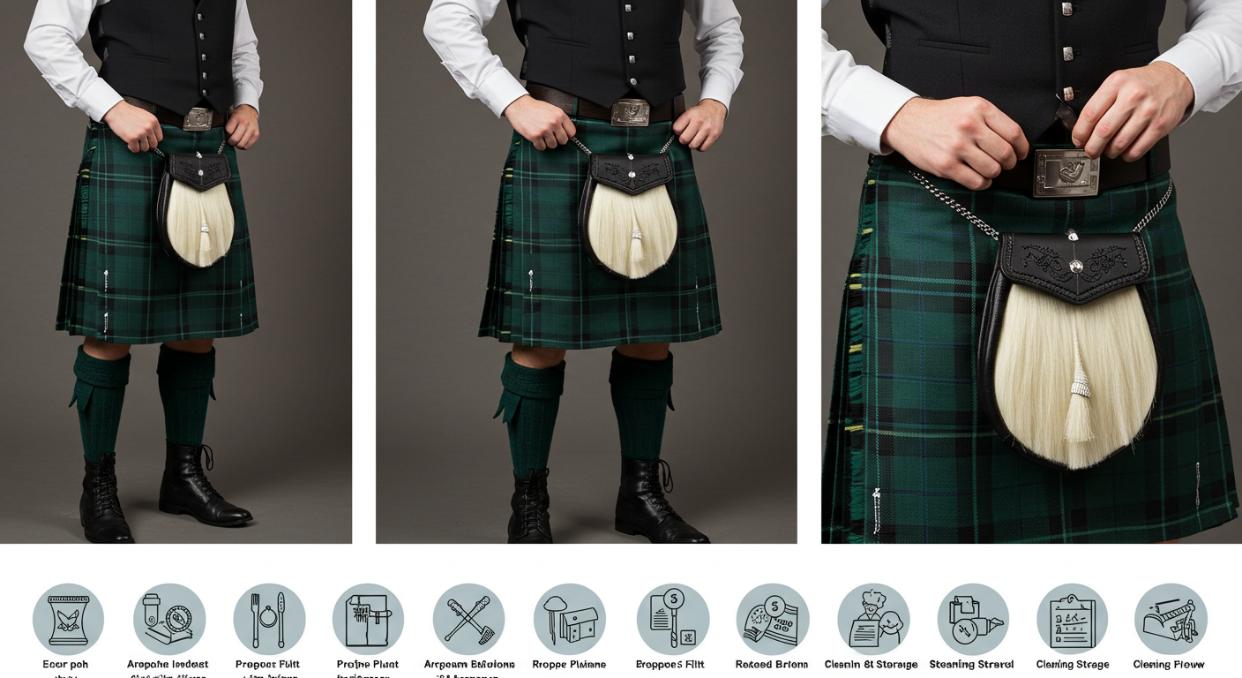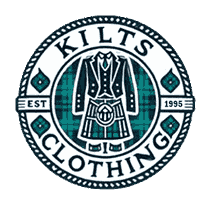How to Properly Wear and Care for Your Irish Kilt: A Step-by-Step Guide

The Irish kilt is a distinctive garment that symbolizes the heritage and pride of Ireland. Whether worn for a formal gathering, a St. Patrick's Day event, or simply as a tribute to Irish ancestry, it is essential to understand how to wear and care for an Irish kilt properly. This detailed guide provides step-by-step instructions on wearing an Irish kilt correctly and maintaining it for longevity.
Step 1: Preparing to Wear Your Irish Kilt
Choosing the Right Fit
One of the most crucial steps before donning an irish kilts for sale is ensuring that it fits properly. The key measurements to take include the waist, hips, and length. These kilts also come with a high waist, slightly above the belly button. The length should typically end just above the knees. A custom-fitted kilt ensures the best comfort and appearance. However, if purchasing a ready-made kilt, refer to the manufacturer's size chart to find the ideal fit.
Selecting Essential Accessories
The Irish kilt is not just about the fabric; the accompanying accessories contribute to its traditional aesthetic. A sporran, which is a pouch worn at the front, serves both functional and decorative purposes. The type of sporran—formal or casual—depends on the occasion. Additional accessories include knee-high kilt hose, garter flashes to keep them in place, and a kilt pin, which secures the fabric and adds an element of sophistication. For formal settings, a tailored jacket and cap can complete the ensemble.
Considering the Occasion
Determining the event for which the kilt will be worn influences the choice of accessories and overall styling. Formal events such as weddings often call for a complete ensemble with a jacket. At the same time, casual gatherings like Irish festivals allow for a more relaxed approach without additional layers.
Step 2: Wearing the Irish Kilt Correctly
Positioning the Kilt
To wear an Irish tartan kilt correctly, position it around the waist, ensuring that the pleats are at the back and the fabric wraps neatly around the body. The waistband should sit comfortably at the natural waistline. A well-positioned kilt drapes neatly and maintains its structure.
Securing the Kilt
Fasten the kilt using its waistband straps or buckles. Many designs come with adjustable straps to provide a customized fit. The kilt should be snug enough to stay in place but not so tight that it restricts movement. Ensuring a secure fit allows for both comfort and confidence while wearing it.
Adjusting the Length and Pleats
The ideal length of the kilt should end just above the knee. You must arrange the pleats properly to achieve a polished look. Smooth out any uneven folds to maintain a crisp and structured appearance.
Step 3: Complementing the Kilt with Accessories
Adding a Kilt Pin
A kilt pin enhances both function and style. Typically placed near the lower front edge, slightly to the left, it helps weigh down the fabric to prevent it from shifting during movement.
Wearing a Sporran
A sporran serves as a practical pouch for carrying small items. It should be positioned centrally at the front, just below the belt. The choice of sporran depends on the event—formal gatherings call for elaborate leather or fur designs, while simpler styles suit casual occasions.
Donning Kilt Hose and Garter Flashes
Knee-high kilt hose should be pulled up just below the knees. Garter flashes secure the socks and adds a decorative touch. Positioning them correctly ensures that they stay in place throughout the day.
Selecting Footwear
Traditional footwear choices include leather brogues, which complement the classic kilt look. For a more laid-back setting, boots may be an appropriate alternative as long as they harmonize with the outfit.
Step 4: Maintaining and Storing Your Irish Kilt
Cleaning the Kilt Properly
Caring for an Irish kilt ensures that it remains in excellent condition for years. Kilts made of wool or wool-blend fabrics require dry cleaning to preserve their texture and color. Machine washing can cause fabric distortion and damage. For cotton or linen kilts, gently hand wash them with a mild detergent in cold water.
Storing the Kilt
Proper storage prevents unnecessary creasing and damage. Hanging the kilt in a garment bag keeps it dust-free. It is advisable to store the kilt in a cool, dry place, away from direct sunlight, to prevent fading.
Preserving Pleats and Shape
To maintain the pleats, steaming can help remove wrinkles without flattening the fabric structure. Avoid ironing directly on the pleats, as this can cause them to lose their crisp definition. When traveling, using a protective garment bag helps retain the kilt's shape.
Conclusion:
Wearing an Irish kilt is not just about fashion; it is a representation of Irish heritage and pride. By following these guidelines on wearing and maintaining the kilt, you can ensure that it remains in pristine condition. Whether for a formal occasion or a casual cultural celebration, embracing this tradition allows you to carry a piece of Irish history with confidence and style.


